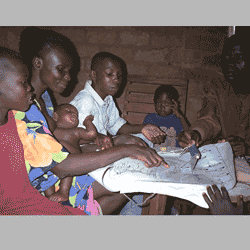
| Search for |
| Description |
NightReader is a small reading light, practical in the rich world, but indispensable for one billion Third World students. |
| Translate |

|
| Copyright & Open Source |

This work is licensed under a Creative Commons Attribution-Share Alike 3.0 License. Please refer to our work and provide us with usefull feedback and comments on our design initiatives. |
| Liability clause |
We cannot be held accountable for injuries incurred during construction or usage of our designs and construction manuals. |








